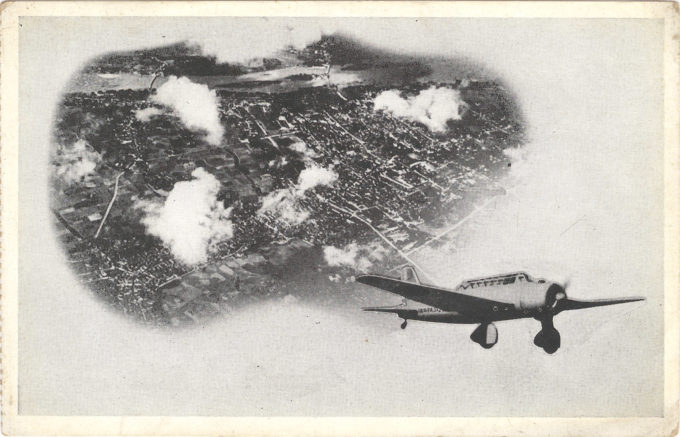
Great Japan Aviation Boy Scouts (Dai Nihonkōkū seishōnen-tai) recruitment postcard c. 1938, picturing a Mitsubishi Type 97 Ki-15 — a two-seat, high-speed reconnaissance aircraft made famous in 1937 when a two-man civilian crew set a aviation record flying from Tokyo to London under the auspices of the Asahi shimbun.
See also:
“Student at Tokyo Army Aviation School” propaganda postcard, c. 1940.
“Kamikaze”, Tokyo-London World Record Flight, 1937.
“From the very beginning, the youth aviator was most definitely seen by the military and society as [being] different from the soldier.
“While all Japanese men upon reaching twenty theoretically became eligible for the military draft, youths between the ages of 14 and 19 could instead enlist in a variety of alternative military preparatory training programs to fulfill their service obligation. This option offered the advantage of finishing military service much earlier or being placed on a fast track to officer rank.
“These ‘youth soldiers’ (shonen hei) were divided into different tracks such as communications, artillery, sonar, sailor, tank, or military band. The most coveted of all tracks was to become a ‘youth aviator’.
“Aviators were recruited, not conscripted, and had to pass a rigorous physical and educational exam process in order to gain admission into flight schools.
“Because almost all aviators on this track started training as teenagers, they were portrayed by the media as perpetually youthful, as opposed to conscript soldiers who enrolled after reaching adulthood at 20, or reservists who were usually older and married.”
– Japan’s Carnival War: Mass Culture on the Home Front, 1937-1945, by Benjamin Uchiyama, 2019

